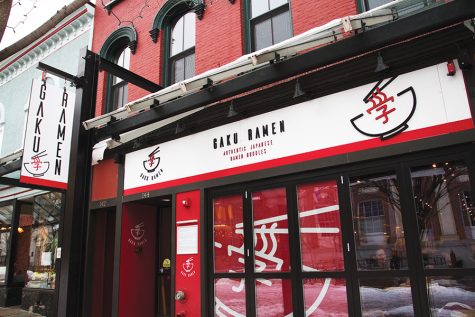Students battle with meal insecurity
February 21, 2018
Roughly a quarter of UVM students are unsure of where their next meals will come from.
The SGA Student Action Committee is now working with several departments to identify and address student food insecurity, senior SGA Senator Bhumika Patel said.
The committee will design a plan to resolve the issue of student food insecurity. They will meet within the next month to discuss survey results, Patel said.
Food insecurity is “repetitively not knowing when your next meal is or what you’re going to eat, maybe not having an adequate meal,” Patel said.
The newly formed committee is a collaboration among University departments, said Nicole Rohrig, an on-campus registered dietitian.
The committee conducted two surveys in February and November 2017 to gather data.
Each survey was sent to a random sample of 4,500 students, staff and faculty and had a response rate of around 25 percent, said Meredith Niles, a professor of nutrition and food sciences. The survey is based on the USDA food insecurity survey.
The results of the surveys will not be officially released until the committee examines the data and decides the best course of action, Niles said.
“We wanted to look at whether this was an issue and to what extent,” Rohrig said.
The new committee is considering a few possible solutions to the problem, Rohrig said. Swipe Out Hunger is a program that has been effectively implemented on 36 campuses nationwide.
“You can donate extra meals or points at the end of the semester and those would basically go into a bank for students who are food insecure to be able to get meals added to their CATcard,” Rohrig said.
Other potential solutions include a campus-wide food pantry, a food bank of leftover dining hall food and a system to alert students of free food on campus, Patel said.
The issue is rarely addressed due to stigmas around hunger, Rohrig said.
“We could have the resources available, but if nobody feels comfortable coming forward and talking to somebody about it, they’re not going to get the help they need anyway,” she said.
Patel attributes the trend of food insecurity to a lack of access, financial means and education.
“It could be a budgeting problem,” sophomore Sharon Webster said.
Webster recently moved off campus and has been able to keep a steady food source from living in the Slade co-op.
Students on the points meal plan, or students living off-campus with no meal plan, often run into trouble because they lack budgeting experience, Rohrig said.
“A lot of expenses come before food and food is almost the most dispensable,” she said. “So if you have to really cut back one week that’s where it’s gonna take a hit.”
Getting nutritious food can be a problem too, Patel said. Sophomore Grace Skylstad, who is on a points plan, said “the biggest issue I’ve had is being able to get enough vegetables…There’s not really any cheaper options of vegetables.”
She said she has people with unlimited plans steal fuit for her.
Currently, food-insecure students must seek help from outside organizations, many of which are difficult to qualify for, Rohrig said.

















John Sayles • Feb 22, 2018 at 1:01 pm
The Vermont Foodbank would love to talk about how we can help be part of a solution. You can contact me, John Sayles, CEO, at [email protected] or Executive Coordinator Jen Messier at [email protected].